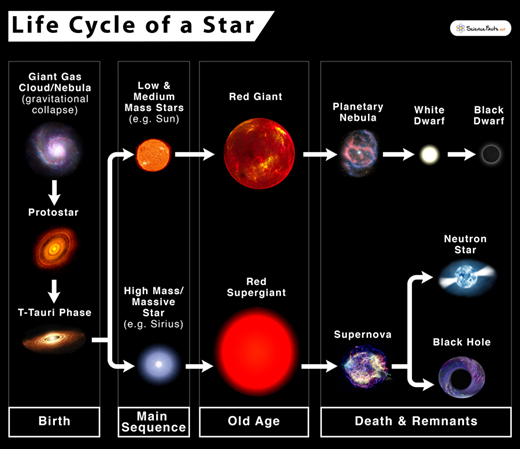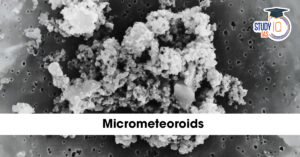Table of Contents
About Brown Dwarf
- Brown dwarfs are objects that are too big to be planets but too small to be stars.
- They are born like stars – out of a cloud of gas and dust that collapses – but do not have enough mass to sustain the fusion of hydrogen like a normal star.
- Brown dwarfs have relatively low temperatures compared to stars. They emit very little light and are often difficult to detect (They emit infrared radiation).
- Dwarf stars have longer lives than giant stars.
Stages of a Star’s Life Cycle
- Stellar Nebula: The initial stage where gas and dust accumulate to form a dense region.
- Protostar: As gravity pulls material together, the core becomes increasingly hot and dense, leading to the formation of a protostar.
- Main Sequence: The longest phase in a star’s life where it fuses hydrogen into helium in its core. This stage can last billions of years, depending on the star’s mass.
- Red Giant: Once hydrogen is depleted in the core, the star expands into a red giant. In this phase, it begins fusing helium and other heavier elements.
- End Stages:
- Low to Medium Mass Stars:
- Planetary Nebula: The outer layers are expelled, leaving behind the core.
- White Dwarf: The remaining core cools down over time.
- Massive Stars:
- Supernova: An explosion occurs when the star can no longer sustain nuclear fusion.
- Neutron Star or Black Hole: Depending on the remaining mass after the supernova.
- Low to Medium Mass Stars:

| UPSC PYQ |
| Q. Consider the following statements: (2024)
Statement-I : Giant stars live much longer than dwarf stars. Statement-II : Compared to dwarf stars, giant stars have a greater rate of nuclear reactions. Which one of the following is correct in respect of the above statements? (a) Both Statement-I and Statement-II are correct and Statement-II explains Statement-I (b) Both Statement-I and Statement-II are correct, but Statement-II does not explain Statement-I (c) Statement-I is correct, but Statement-II is incorrect (d) Statement-I is incorrect, but Statement-II is correct Answer: D |


 Micrometeoroids: Tiny Space Particles, M...
Micrometeoroids: Tiny Space Particles, M...
 India Needs a National Insolvency Tribun...
India Needs a National Insolvency Tribun...
 Unlocking the Potential of India–Afric...
Unlocking the Potential of India–Afric...

























